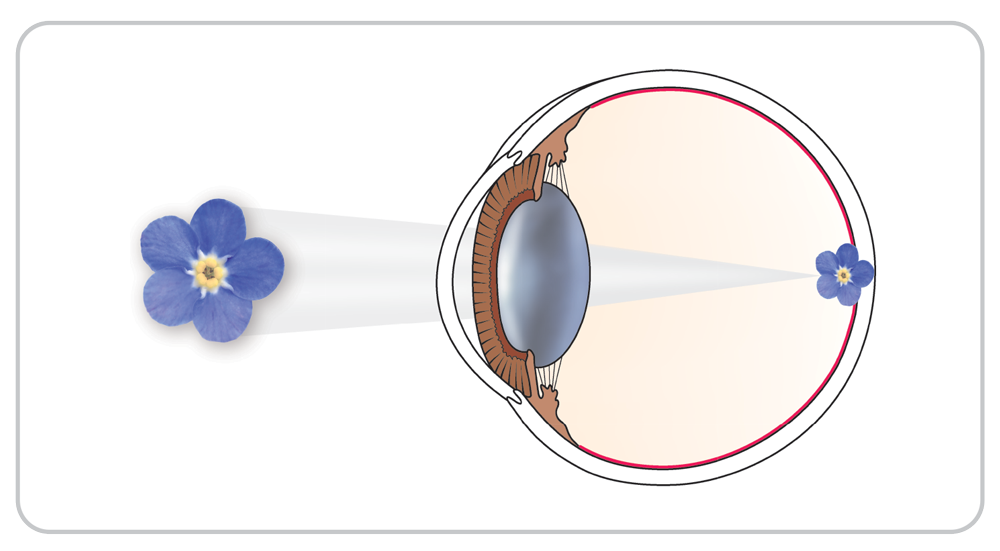Normal sight
A miracle occurs when the eyes and brain work together to transform light into sight.
There are two focusing elements in the eye, the cornea (the clear 'front window' of the eye) and the lens. Together these focus light sharply onto the retina at the back of the eye.
The cornea does most of the focusing for distant objects whilst the lens focuses for closer activities such as reading.
The retina is sensitive to light, changing it into electrical impulses sent to the brain where they are perceived as sight.

Structure of normal eye

In normal sight the image is focused accurately onto the retina
Short sight (Near sight, myopia)
Vision is blurred because the eye is too big and objects are focused in front of the retina instead of on it. In short sight, far vision is worse than near vision.

In short sight the image is focused in front of the retina
Long sight (Far sight, hyperopia)
In long sight the eye is too small and so objects are focused behind the retina. Near vision is worse than far vision but the effects vary with age. Young people may have sharp focus but become dependent on glasses as they get older. Long sight is not the same as presbyopia which is discussed later.

In long sight the image is focused behind the retina
Astigmatism
Astigmatism is caused by an unevenness of cornea shape. Normally the cornea is almost spherical but in astigmatism its curvature is greater in one region than another. Compare a football (spherical) to an egg or rugby ball (astigmatism). Vision is blurred at all distances. Astigmatism usually occurs with either short or long sight.

In astigmatism the image on the retina is distorted 
Presbyopia
This is the dependence on reading glasses that comes to most people with age. The lens inside the eye becomes less flexible with time and so cannot focus on close objects. Presbyopia is a manifestation of getting older not a disease, but may be very inconvenient. It occurs on its own or with any other focus defect.

In presbyopia the image of close objects is focused behind the retina

Presbyopia
Higher order aberrations
These are minute imperfections of focusing, as unique to every eye as a fingerprint. They have technical names such as 'spherical aberration', 'trefoil' and 'coma' described collectively as 'higher order aberrations'. Higher order aberrations decrease the quality of vision at all distances. They are not corrected by glasses or soft contact lenses, but some may be treated by lens implants.

A mathematical analysis of higher order aberrations
Understanding your glasses or contact lens prescription

The unit of measurement is the 'dioptre'
Sphere: The amount of short or long sight. A 'minus' denotes short sight and a 'plus' denotes long sight. The higher the value, the more short or long sighted you are.
Cyl: The amount of astigmatism, usually preceded by a 'minus'. The higher the value, the more astigmatism you have.
Axis: Astigmatism has an orientation or 'axis' as well as an amount. The orientation is expressed in degrees.
Add: The strength of reading glasses required.












